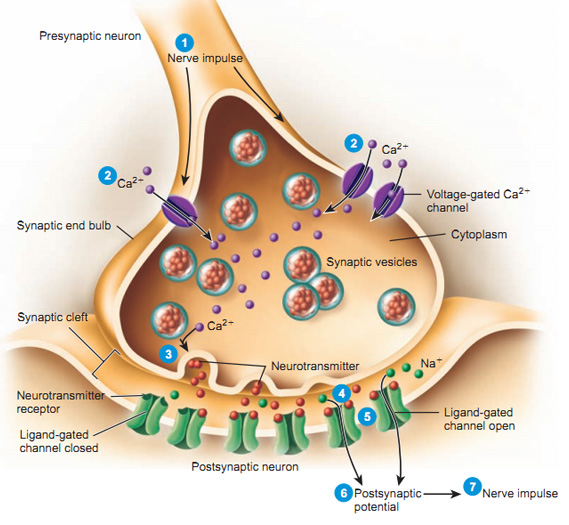Synaptic transmission

Electrical transmission occurs when an action potential reaches an axon terminal, this depolarises the presynaptic membrane. Voltage gated Ca2+ channels on the presynaptic membrane open in response to this depolarisation[1]. Ca2+ enters the axon terminal down a concentration gradient through these open channels. This causes the vesicles containing the neurotransmitter acetylcholine to migrate towards the presynaptic membrane. These vesicles fuse with the presynaptic membrane, and acetylcholine molecules are released into the synaptic cleft by the process of exocytosis. Acetylcholine molecules diffuse across the synaptic cleft and bind to receptors on the postsynaptic membrane. The binding of acetylcholine causes ligand gated Na+ channels to open and subsequently Na+ rushes into the postsynaptic membrane, this forms a Graded-potential in the postsynaptic membrane, is that Graded-potential is suprathreshold when it arrives at the axon hillock then an action potential will fire in the postsynaptic neurone, if the graded potential is subthreshold when it arrives at the axon hillock then a action potential will not fire in the postsynaptic neurone.
References
- ↑ Antranik (2012) Synaptic Transmission by Somatic Motorneurons, [Online], Available: http://antranik.org/synaptic-transmission-by-somatic-motorneurons/ accessed [27 Nov 2013].